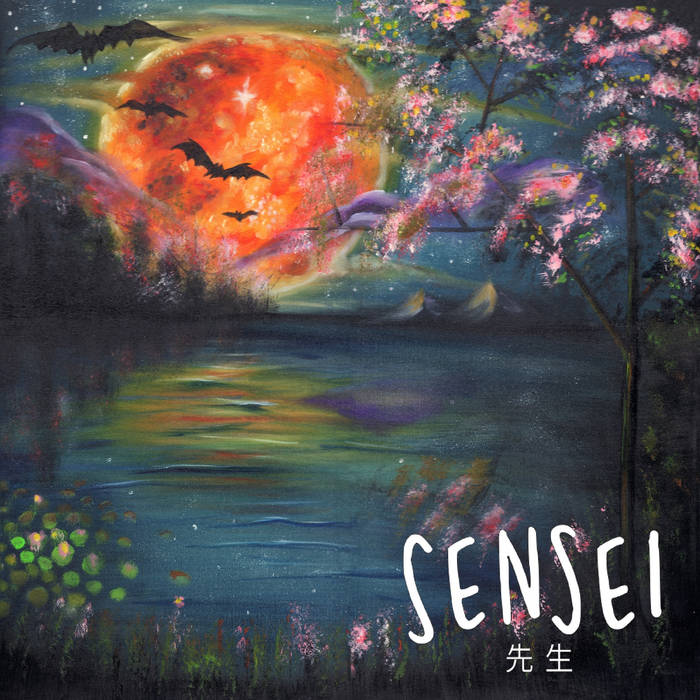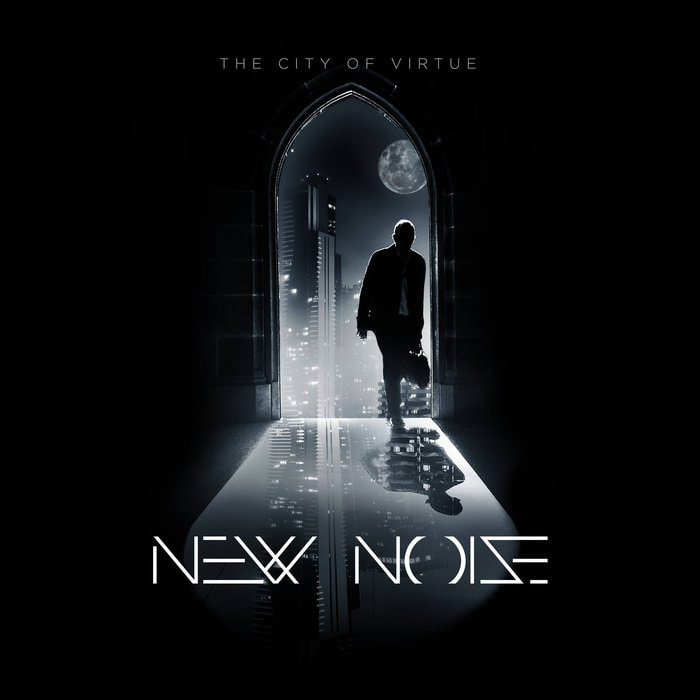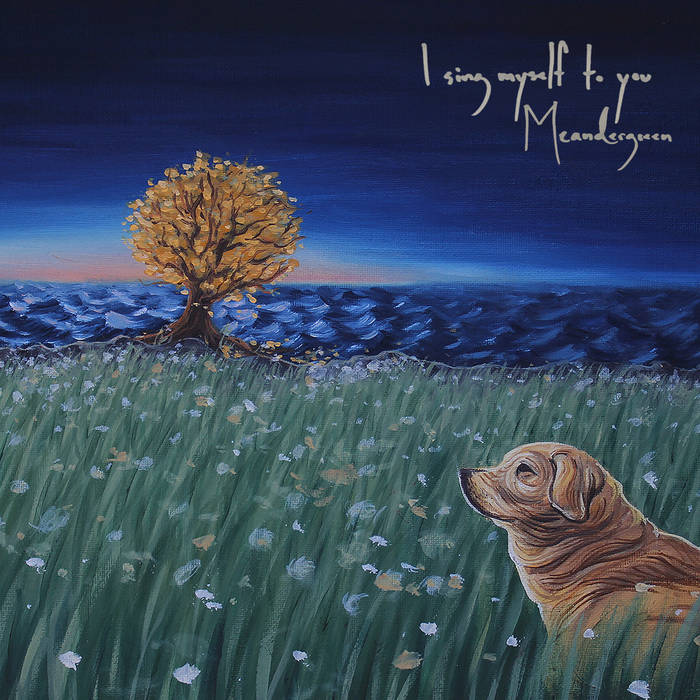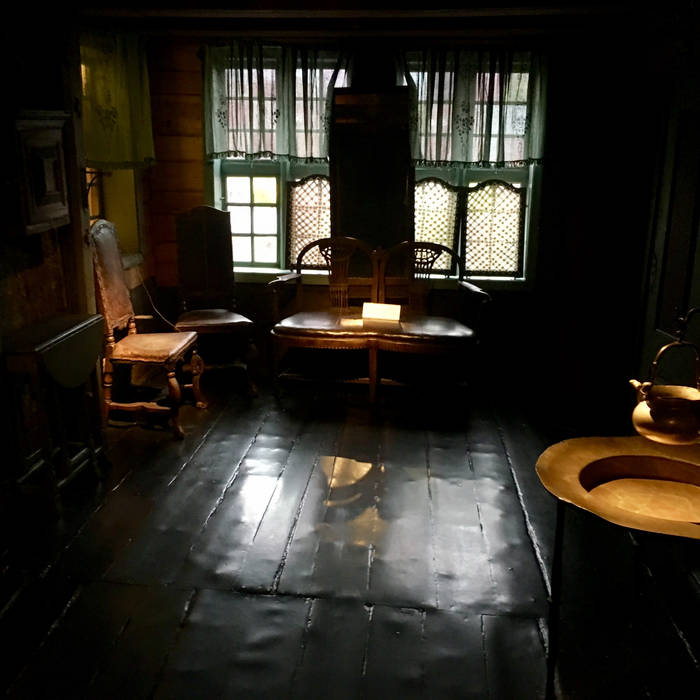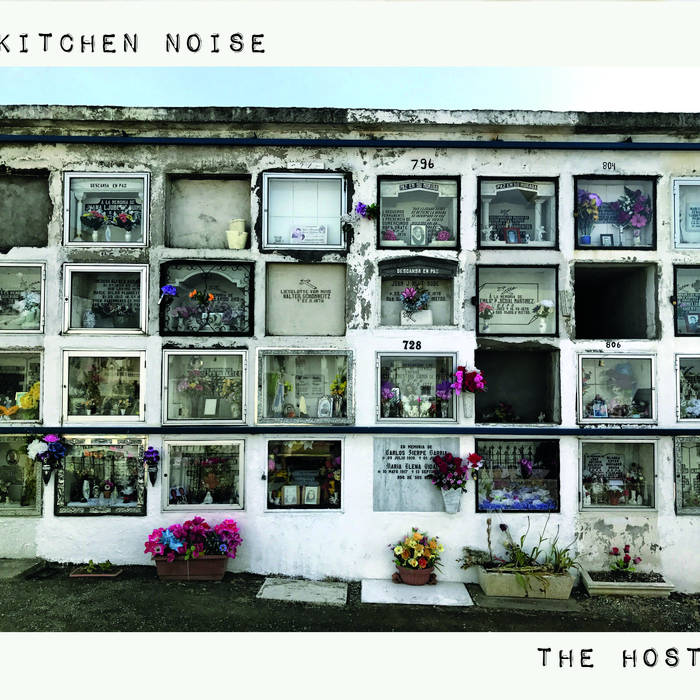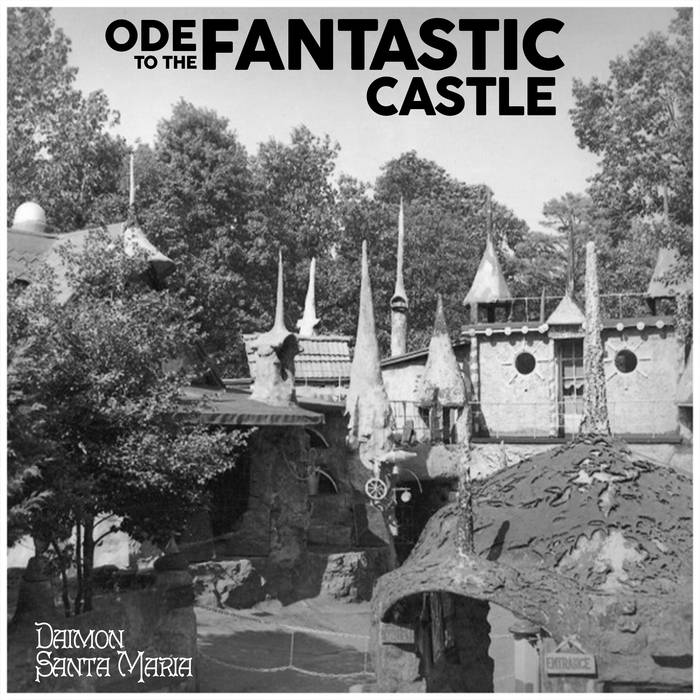|
Camden, Ohio's progressive rock band Sensei is an interesting mix of influences and tastes. The band has shrouded itself in mystery. I don't know who plays what or who their vocalist is. I promise it's not from a lack of digging. That's okay though. I like a little mystery. Sensei's latest album is Flora and Fauna, and for me it felt like two albums smashed together. I feel I would appreciate each style separately, but when put together I had a harder time with it. Please read so I can elaborate because I believe the group to be talented, and there were several things I liked.
As I state, there are two albums working against each other. The first is a trippy alt-rock experience with free flying guitar and bass riffs. It's great. The other is a modern screamo album that borders on punk and houses a solid subversive message. The vocal talent is fantastic; he has a fantastic range that winds around the lyrics perfectly when he's singing. He can also scream it out like a champ. Again, these two sounds separated from one another I think would be amazing. I would probably buy both albums, but it's a lot to be packed into the five tracks of this singular album. You'll hear it immediately with track one "Junebugs." It starts off with a jammy rock vibe that's chill and really showcases that singing talent. The song is pretty lengthy and toward the end you get an abrupt transition into a screamo song without any warning. The issue being I was pretty happy in that chill place they had built. I wasn't ready to leave. Some of the tracks do attempt to separate the two sounds, but there's traces of both in every song and I found it perplexing. These people are talented musicians. I love their play with song structure and their ability to diversify tracks with different moods. To whoever it is that plays the guitar, that person made quite an impression. This guitarist was a strong thread that pulled all of these sounds into a cohesive album. One of the commendable things done with this album is the production which was done by Moonlight Studios. Considering there were essentially two completely different genres at play in any given track, the music was given its proper wings. My only grievance was the ample amount of distortion utilized. In many instances it was just too heavy handed and buried things I really wanted to hear, especially on the musical end. Other than that, production had the finger on the button of what the group wanted to achieve and whether I personally like it or not, the production was spot on for what the project needed. I appreciate the experimentation and creativity it took to decide to place these two sounds next to each other even if the chasm was too broad for me at times. I will say I am curious enough to want to hear them have another go at it.
0 Comments
Grey Shore Avenue aka Bryan Kuhn made some improvements on his latest effort entitled Chemicals and Allegories. It his best work due in part to focusing on the melodies, hiring a professional mastering engineer and putting forth some of his best songwriting.
The album opens with “Distant Memory” which is just Kuhn and his guitar. He strums simple chords and gives an emotionally resonant vocal performance. His voice is strained with melancholy. “Here to Baltimore” is another success, this time adding pads and piano into the mix. Kuhn sings “From here to Baltimore / I’m doing, I’m doing what I should / I’m living, I’m living in the good / The hills won’t keep me down / I will find the sound.” “Anhedonia Days” definitely has a different feel. He is still strumming a guitar but the synths especially on the beginning of the song make it feel dissonant almost frantic. What I really appreciated was how the song unfolded and became more. “Black Highways” combines fuzz, synths and dry guitar with his signature vocal style while “Wage These Wars” strips thing back and showcases some of his guitar skill. Kuhn is just getting started. Songs like “The Boardwalk,” “Chasing Horizons” and “42 Straight” are some of the other highlights on the album. If you go to the Bandcamp page for Grey Shore Avenue you will notice that he has a comprehensive catalog. Kuhn has music in his blood and it is obvious to me especially on this latest effort that he still has a lot left in him. As for now Chemicals and Allegories is his latest album that best captures the raw emotions that he releases with this cathartic process.
New Noise is a band from Australia comprised of Dom Macaluso and Nicholas Rickard. The band formed in 2017 and recently released The City of Virtue. The band stated, “when writing the album we really didn't want to stick to a specific genre.” I’ve said this before that being a genreless band is often confusing for audiences especially for a band that is starting out. If you aren't building a foundation you most likely aren't building an audience either. Although the band says they didn't want to stick to one particular genre I would say some of it falls into contemporary hard rock sound with a futuristic feel. I was reminded of Evanescence and Linkin Park in a number of ways.
The album starts with “Fallen” which I thought was the most intriguing track on the album. It starts with beautiful vocals, traffic noise and distorted fragments. I wasn’t sure where this was headed. It never forms into much more than beautiful chaos and also isn’t indicative of any other tracks on the album. Up next is “The Healer Who Murdered” which is the type of style the band plays through most of the album. This style was popular for awhile and the band doesn't introduce much new here but does it justice. The same could be said about “Last Light” which is another highlight. The band starts to lose me on “Solitude.” It's largely an electronic song with some type of filter strapped on the whole song. I thought the song was skipping like when there were CD’s but I guess that was intentional. I’m all for effects and production techniques but the effects completely took over the song which has a lead vocal and melody. I thought the band got back on track with “The Watchtower On The Hill” which was one of the more original songs and also well written. The band goes full on blood curdling metal with “Lust & Virtue” and “Rose In The Chaos” dips in to experimental ambient territory. They close with the seven-minute-plus “Lion“ which is all over the place stylistically and very ambitious. One thing I can say about this album is that there is no sense of levity. Almost to the point where it can seem sort of funny. The band has a lot of hallmarks of a new band but mostly in the fact that the album didn't have much creative control and cohesive elements that establish a signature sound. Don't get me wrong. I like some of the songs and thought there was some talent here but would have a much harder explaining this band's sound in a couple of words which is typically something that successful band's have. Overall, I was impressed for how newly formed they were and I am interested to see where they go from here.
Meandergreen is a band from from Windsor, Ontario that released a three-song EP entitled .I sing myself to you. The three songs felt like sketches and ideas which could have been expanded upon and perhaps they will be. Take for instance the opener “Dog Hat Poetry” which revolves around variations of pretty cool guitar riff and that's about it. Sure the drums drop out and come back in but the dynamics hardly change and the guitar riffs did feel interchangeable. For some reason I felt the song could have been a ten-minute epic.
“For You” starts off with some excitement that sounds similar to the riff in the first song. Before the one-minute mark the song slows down and begins to crawl but not in a bad way. The music barely moves and a spoken word piece comes into the mic but I couldn't make out the lyrics very well. As the song progresses the energy ever so slightly picks up a little bit but then just kind of ends in a lethargic fashion. “Hopefully (January Leaves)” starts a few dbs softer then the remaining song. It’s a fairly basic riff repeated with some type of organ. There is almost no movement at all until about a minute and thirty seconds. Once they get there it ends up being the most exciting moments of the EP. There are some dynamic changes that come fairly fast. The band however holds onto a riff and eventually the drums drop and it ends. One of my favorite instrumental bands is Tortoise. One of the reasons besides their amazing technical ability is their ability to unleash. That's one thing I would definitely like to hear from this band. They have a bit of math rock hypnotic thing going on which was great but I would like to hear them get into experimental territory and not be afraid to go a little crazy free jazz style at points. The band has some good ideas and actually do have a foundation here. I’m interested in where they can go and if they can take it to the next level.
Lunny (guitar/vocals), The Newge (bass/vocals) and Mori (drums) are Smiler. The three-piece band recently released FUNCTIONING EP which contains three songs. They play no frills garage rock that has been around since the ’70s - no more no less.
The songs are basic revolving around distorted power chords, organic drums and a chugging bass. As far as the recording quality goes it definitely veers towards a demo from the drum sound to the stereo separation. The band gets going with “Make Up” which is garage rock 101. A familiar rock chord progression is strummed and you are treated to vocals that are gritty and fit the style of rock. The verse was solid but the band never delivers a chorus. For whatever reason they decided to swap out a chorus with a lead guitar solo which happens three times. One mini guitar solo at the end would have worked but I have to admit I wanted a hook or at least more significant change in the song. I thought the band redeemed themselves with the hook on “Do It Again.” The song is about a minute shorter than the opener but they fit in a lot more. They get to a catchy and dirty hook by the twenty-five-second mark. Around the two-minute mark they speed things up for a short but effective outro. Solid song. They close with “Stomper” which was another solid song. It’s a fun punk song with jagged chord progression and tons of attitude. Smiler is in no way introducing anything new with this EP. That being said it is a fun and short EP for fans of this genre. Truth be told this type of music is really meant to be experienced in a smokey dive bar with twenty people max while drunk .
When a person spends quite a bit of time, many years in most cases, and then decides to strike out on their own there is usually a fifty-fifty chance that the album is either going to be a critical hit or a complete disgrace. A lot of it depends on said person’s influences and the bands they have been known to play with in previous incarnations. The merit of these records is weighed using some sort of formula based on past experiences. Does the solo album sound like a departure from the artist’s previous work? How much so? Or, if not, does it just sound like said person has made a solo record sans previously established band?
I can’t speak to the previous bands which long time San Francisco resident Scott Daskam has played in but I can speak to his latest venture, a solo record called November One. All that Daskam reveals about the origins of the record is that the songs were inspired by his travels abroad. From the opening tune “SILVER” which is slow and sludgy, dark and heavy with gritty guitars and plenty of roiling and drawn out noisy hums, coupled with Daskam’s slick and shadowy vocal growl I thought that maybe he traveled to Norway to see some doom metal bands and maybe picked up on their vibe but only delicately. But by the next song “LOWEYE” which is much more playful sounding despite its grisly electronic vibes, I came to realize that Daskam’s vocals just have that creepy Marilyn Manson baritone to them. Later on with the instrumental “SUMDAY SUN” I found myself getting more into the music, which is very plain and good guitar and effects playing here in the vein of a more indie-pop shoegaze variety. The grooves and movements of the songs get better as November One progresses, pulsing electrolysis of rock that is “FOOLS VIEW.” Here I found Daskam’s vocals, a bit more laid back on the darkness, to be a very effective focal point on the song. However I felt the opposite on the dreary “ZALEEK.” The record’s closer, “GUIDE US IN” represents another rich composition on which music and vocals gel and hopefully this is a style which Daskam will follow in the future. With November One Scott Daskam has set out on his own and made a record that shows his potential and talent. If I had to list a required listening session for influencing Daskam’s next record the album that would be at the very top of the list would be the Cure’s dark-stained and powerfully prolific Pornography. I think here he will find the pacing and nuances as well as the balance of guitar rock and gothic synth that he is looking for.
It’s not often you’ll hear a band describe themselves as “the love child of Black Sabbath and James Brown.” In fact, how often do you even hear these two legendary acts in the same sentence – yeah, I didn’t think so. Labeling their brand of music ‘alternafunk’ Charles Laurita & The Mischief is a six-piece powerhouse from Hamilton, New Jersey. Their particular style blends together a “tight horn section and heavy dance grooves” that attempts to break down the barriers of genre music in order to offer something for everyone to enjoy. Interstellar Fortuneteller is the band’s first full-length album and covers outer space themes such as those found in classic sci-fi movies like Alien.
Starting off with “Alone” there is an ominous windy sound that builds tension before the music breaks in and judging by the song’s title, outer space would indeed be a very lonely place to be. I kind of felt though that the minor chords and horn playing were an odd pairing when I first listened – maybe the guitar needed to have a heavier sound for me or more distortion. Moving on to the next song, “Lose My Mind” has a blues feel and a shuffle-like beat. “Break The City Down” sounds like something Stevie Ray Vaughn may have written or played with a horn section of course. Although in the song, I wasn’t hearing the guitar enough, but there’s a great part that features baritone sax. “Out There Starlight” has a great funky rhythm guitar and handclaps that go very well together. “How To Fly” is one of my favorites from this band; a driving, toe tapping danceable number and very fun to listen to. “Wicked Little Thing” speaks about admiring the looks and moves of an attractive woman. This one would also be a good rocker to dance to. On “Talk To Me” I was finally hearing some of that James Brown funk influence, but at the same time it also reminded me of a Saturday Night Live skit called “What Up Wit Dat?” But don’t get me wrong; I adore SNL so naturally I enjoyed this tune. “Lying On The Floor” is a bit strange, at least lyrically – “She looks divine while she’s lying on the floor.” I am not sure what these words are implying; however the horns have a nice, happy feel to them. I just find the lyrics rather disturbing. Another song I like, at least musically is, “Shut Your Mouth And Dance.” The chord changes, the guitar solo, the darker backing vocals and the horns – all of it was very well done. “Ridley” is another great number, if you’re into instrumentals. It’s got a good groove; heavy guitars and parts of it reminded me of the Blues Brothers band from the 1970s. Next up is “Shape I’m In” adding greater depth to the band’s list of songs. It’s a slower tune and here they’ve added a ukulele, if I’m correct. There’s also a gorgeous muted trumpet part and it’s the perfect choice for this tune. “Make It Out Alive” features a funky Nile Rodgers-like guitar and “Skin & Bones” has a catchy horn part and the tambourine is a great addition as well as the faster tempo, if only for a brief moment. Interstellar Fortuneteller is a fun follow up to Charles Laurita & The Mischief’s first release. Although at times I found some songs to be campy and perhaps too long, this six-piece band grooves well together with their own genre of ‘alternafunk.’
Cory Foley-Marsello (vocals/guitar/banjo), Andrew Toy (drums/percussion), Matt Krist (bass), Kimberly Nelson (vocals) and Jay Hardin (keyboards/vocals) are Kitchen Noise. Foley-Marsello is also an engineer which is a huge bonus for any band and is evident immediately on their album entitled The Host.
The music on The Host is hard to pinpoint which is a good thing but have cohesive elements in the music. There is a mix of folk, rock and more. More importantly is the dense layers of instrumentation throughout the songs which really defines a lot of the album. There are two bands which I thought when combined could give you a good idea of what they sound like - Sufjan Stevens and The Boy Least Likely To. Even more accurate is to listen to a song like “Chicago” off Illinois and “be gentle with me” off the album the best party ever. This album is intense and a lot to take in. It never felt arduous but this isn't an album that's meant to be consumed quickly. On that note I was immediately drawn to the music starting with “The Host.” The song is one of the most emotionally resonant on the album. I especially enjoyed the line “nothing stays and nothing holds” which builds to an exciting crescendo. The band has more success with “Before the Goldrush” which can induce knee slapping country dancing while “Huntingtown” strays from conventional 4/4 time and builds towards an epic and grand end. I loved what was happening production wise (especially with the tremolo type effect) on “Golden Blues.” The band slows things down with the more melancholy and pensive “Skin and Bones.” Don’t miss the closer “Mountain Home.” This is the type of album that you just need to listen to. I could write for pages about myriad textures and tones throughout. Suffice it to say that I highly recommend you spend some time with The Host. You won't be disappointed.
Tim Howard has been recording as Soltero since 2001. He is based now in Brooklyn after stints in Boston, Philadelphia and North Carolina. Evoking Silver Jews, Handsome Family and the Kinks, Western Medicine Blues is described as “an album of loose, gallows-humor pop songs.” Initially recorded on a Portastudio four-track at home, Howard took the songs into ProTools for further work, striking a fine balance between bedroom-recorded immediacy and the crisp richness of computer-fidelity tracking. Almost all self-recorded, Western Medicine Blues emerged as a catharsis and an escape from health problems members of his family were suffering, informing the thematic content of the record.
The album opens with the title track “Western Medicine Blues” a mid-tempo motorik beat with a debt to Tom Waits. The tight, hollow bass guitar and restrained guitars form an engine that drives the expansive track with skittery piano and string drones. Howard’s layered vocals bring a lot of diversity, at turns quietly resigned a la Chet Baker and ripping into forceful wordless harmonies. It definitely sets the tone for the record, off-kilter and somewhat mournful but not without a groove. Lots of the record uses older textures to bring depth to the arrangements. A Kinks-y lead guitar and throwback organ give muted power-pop jam “I Want to Have a Baby” a bit of a retro sheen, while “True Indication” uses a chunky baritone solo to lead into a dusty-canyon vibe. “Blue Island” has a watery organ straight out of the ‘60s samba craze. These touches add a variety to the mix that’s nice, especially as Howard’s songwriting—though not repetitive—tends to sit in a Pavement-like indie-rock pocket. There are spots where things tighten up emotionally, most particularly “Wisterians.” A late-album track anchored by a dry acoustic guitar. Howard sings quietly in a low register, telling the story of getting married one summer and the way life introduces distance between people. With just a bit of ambient instrumentation, “Wisterians” takes the themes, both lyrical and musical, that the record hints at and drags them to the foreground. It’s an arresting moment, driving home the struggle Howard alchemized to create the album. “Island to Island” is the closing track, led with a beach-y tremolo guitar and supported with an arrangement somewhere between country-western and Beach Boys sparkle. With a long fiddle section halfway, followed by twinkling piano unrooted from the tempo, Howard gently sings, “I never knew / My place in this world.” Drifting out to sea, away from the tumult and strife, Western Medicine Blues ends by reaffirming its own existence—a refuge from the crazy world. Take some time out for this one; it’s a sweet, gentle place to go when the noise of life gets out of hand.
Daimon Alexandrius is a Jackson, NJ-based musician. Performing with Karmic Juggernaut and having contributed to groups including Elevator Art, Remember Jones and Bone and Marrow, Ode to the Fantastic Castle is Alexandrius’s first completely solo-recorded project.
The album is actually one long piece in eight movements, and serves as an exploration into the life of eccentric New Jersey figure George Daynor, who constructed the Palace of Depression in Vineland after losing his fortune in the Great Depression. Slyly peddling half-truths about his construction and constantly building notoriety in his community, Daynor claimed an angel gave him a vision of the architectural plans and even courted scandal by claiming the institution was involved in a kidnapping. Opening in 1932, the Palace fell into disrepair after a fire, and was razed five years after Daynor’s death in 1964, though the Vineland community has made steps towards restoration of the site. The piece itself is 18 minutes long, a reference to the 18 spires of the original building meant to serve as perches for angels. The first movement is “Subterranean” referring to the Palace’s Subterranean Caverns. After a dreamy intro of guitar and chimes it is later joined with an expressive flute. Building to a huge presence, the arrangement clears out for gentler guitar and mallets, upon which the vocals arrive. A back and forth between a soft angelic voice and a bold tenor likely representing Daynor himself, “Subterranean” establishes the mysterious, exciting nature of the whole Palace project, using folk textures and experimental intensity to a Sufjan Stevens-like effect. The repeated refrain of “God is my witness” demonstrates Daynor’s conviction that his undertaking was the will of God. “Voices” is a funky acoustic track with a searing electric guitar lead. The lyrics question the reality the singer is seeing, though the point of view is vague. Alexandrius claims it could be Daynor, or even the land itself, bearing witness to Daynor’s vision and the future construction of the Palace. The dreamy blurring of reality is enhanced by the spacey folk sound of the movement, evoking a stripped-down Fleet Foxes. “Welcome to the Knockout Room” brings the quirky, busy vibe of the construction of the Palace out of junk. An instrumental piece in 5/4, acoustic guitars and splashy percussion meet twinkling glockenspiel and searing electric guitar to evoke a frenetic, yet purposeful environment. The music has some of Daynor’s well-known aphorisms, creating an atmosphere not unlike a bizarre circus. Alexandrius took inspiration from Daynor’s ‘Stone Age music’ that accompanied his tours, with metal percussion and even brass instruments. “This is the Man and this is the House” is where the concept of the Palace finally breaches the public consciousness. As if he is guiding us into his creation, Alexandrius sings from Daynor’s perspective in a loose, Decemberists-like acoustic number. Though reaching a sort of emotional peak, the track guides directly into the next one, leading from the excitement of the Palace’s opening to the purpose Daynor felt it should serve. “Eighteen Spires” explains what the 18 spires of the Palace represent, and then chronicles Daynor’s fall from grace after a fashion. After misleading the FBI during an investigation to generate notoriety for his attraction, Daynor lost favor and spent time in prison, taking him away from his divinely-inspired palace. Though the preceding movement represents a triumph, “Eighteen Spires” takes its musical themes and turns them slightly to make a haunting acoustic number. The piece once again seamlessly transitions into “Ruins” which speaks to the financial and social ruin of Daynor after his imprisonment, as well as the literal disrepair of the Palace after a fire and incidents of vandalism. Washes of deeply revered electric guitar punctuate a barren finger-picked guitar arrangement, which grows as Alexandrius sings “I just can’t bear to let you all / see you this way.” Once again loosely speaking for both Daynor and the Palace itself, Alexandrius shows the deep interrelation between the man and his life’s work. “The Devil and his Gold” is less mournful, wherein Daynor takes an appreciative look at all his accomplishments. From success in the Alaskan gold rush to financial ruin in the Depression, he took that tumult and turned it into the motivation for making his ultimate gift to the world. Though it also ended with him destitute, the journey showed him always in pursuit of greatness - “beating the devil to his gold.” As a conclusion to the performed music on the album, the sprightly Appalachian sounds let Daynor’s story seem to float away into the hills. The record concludes with “The Hidden River” a field recording of a running river and all the nature surrounding it. Showing earth reclaiming its space after the rise and fall of a strange monument, the soft environmental ambience lets the listener deconstruct the quick and tumultuous tale. It’s an interesting way to conclude an ambitious project in itself, but Alexandrius has risen to the challenge. Ode to the Fantastic Castle is appropriately broad and quirky, and its creation by one man mirrors its narrative content in an interesting way. If you’re looking for a weird slice of New Jersey history from a (talented) person who’s passionate about it, this record will be stimulating and enlightening. |
Critique/insightWe are dedicated to informing the public about the different types of independent music that is available for your listening pleasure as well as giving the artist a professional critique from a seasoned music geek. We critique a wide variety of niche genres like experimental, IDM, electronic, ambient, shoegaze and much more.
Are you one of our faithful visitors who enjoys our website? Like us on Facebook
Archives
July 2024
|

